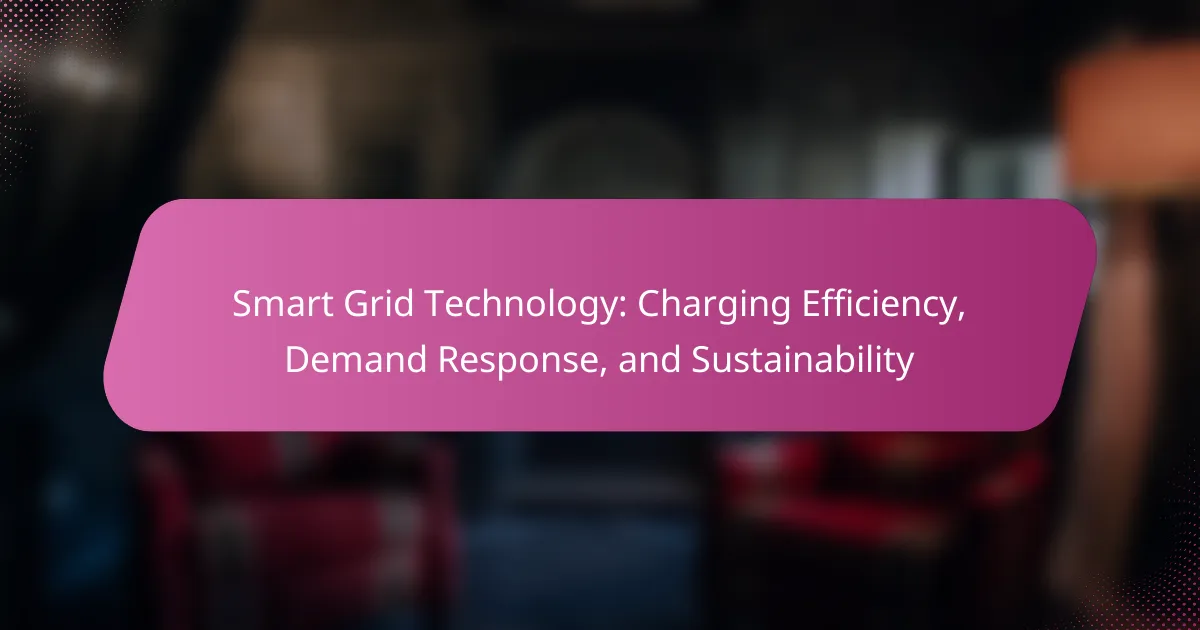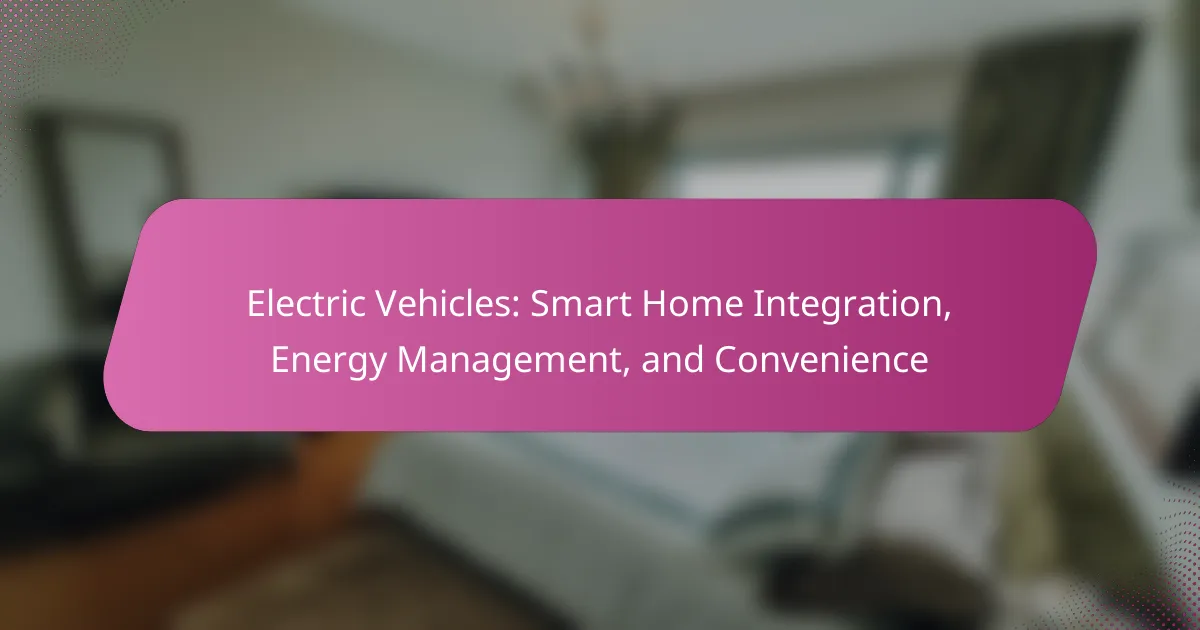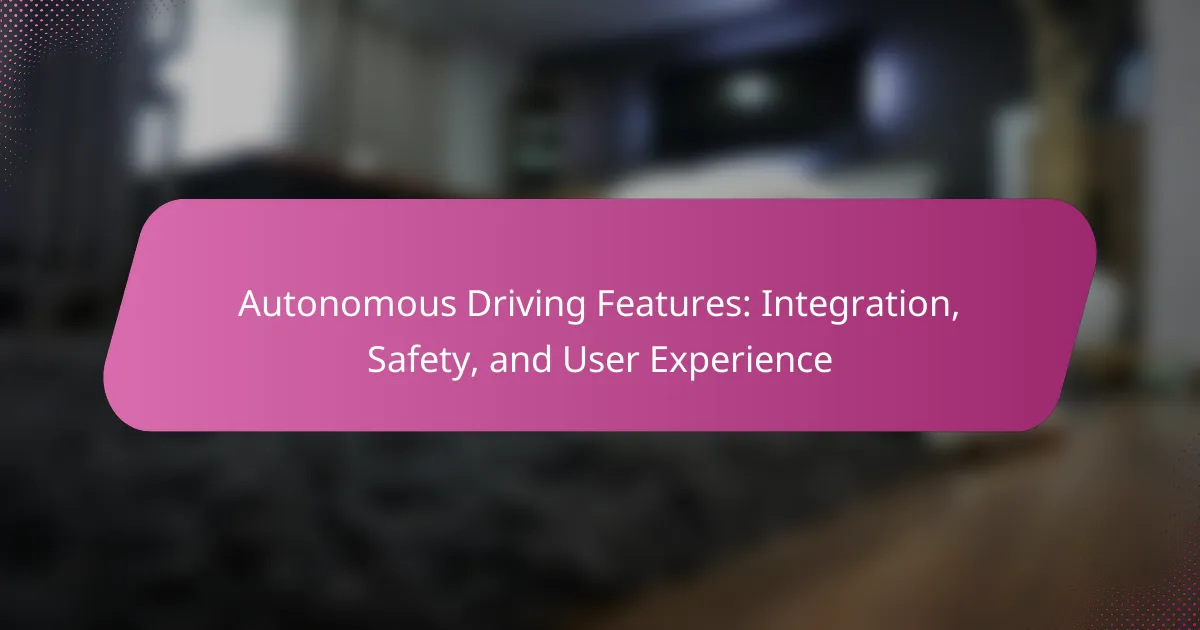Smart grid technology plays a crucial role in enhancing charging efficiency for electric vehicles by optimizing energy distribution and minimizing waste. Through advanced communication and control systems, it balances supply and demand, allowing for charging at optimal times. Additionally, demand response strategies encourage consumers to adjust their energy usage during peak periods, promoting grid stability and sustainability while integrating renewable energy sources.
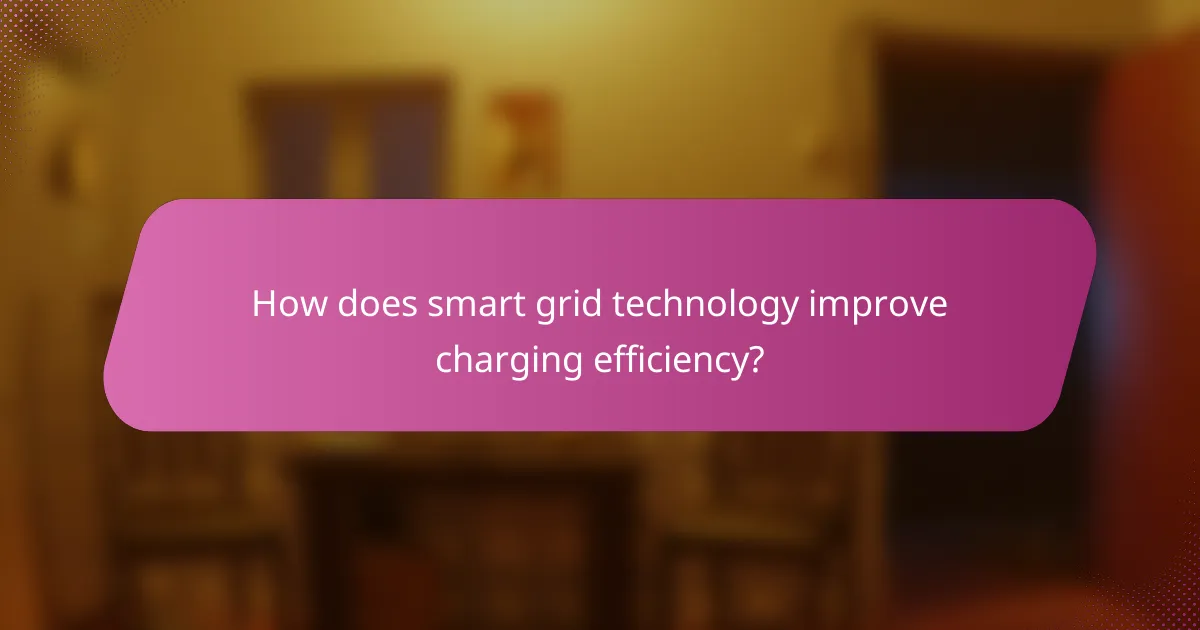
How does smart grid technology improve charging efficiency?
Smart grid technology enhances charging efficiency by optimizing energy distribution and reducing waste during the charging process. It employs advanced communication and control systems to balance supply and demand, ensuring that electric vehicles (EVs) charge at the most efficient times and rates.
Dynamic load management
Dynamic load management allows utilities to adjust the energy supply based on real-time demand and grid conditions. This means that during peak usage times, charging rates for EVs can be lowered to prevent grid overload, while off-peak hours can offer higher charging speeds. By managing loads dynamically, utilities can reduce costs and improve overall energy efficiency.
For example, if a neighborhood experiences high electricity demand in the evening, the smart grid can limit charging speeds for EVs, ensuring that the grid remains stable. This approach can save consumers money on their energy bills by taking advantage of lower rates during off-peak hours.
Vehicle-to-grid integration
Vehicle-to-grid (V2G) integration allows EVs to not only draw power from the grid but also return energy back to it. This bidirectional flow of electricity can help balance supply and demand, especially during peak periods. By utilizing EV batteries as a temporary energy storage solution, the grid can enhance its reliability and efficiency.
For instance, during a high-demand event, EVs connected to the grid can discharge stored energy, providing additional power and stabilizing the grid. This not only improves charging efficiency but can also generate income for EV owners through participation in demand response programs.
Real-time energy monitoring
Real-time energy monitoring provides insights into energy consumption patterns, allowing users to make informed decisions about when to charge their vehicles. By tracking energy usage, consumers can identify the most cost-effective times to charge, taking advantage of lower rates and reducing overall energy costs.
Smart meters and apps can display real-time data, helping users optimize their charging schedules. For example, if a user sees that electricity prices drop during the night, they can set their EV to charge during those hours, maximizing efficiency and savings.
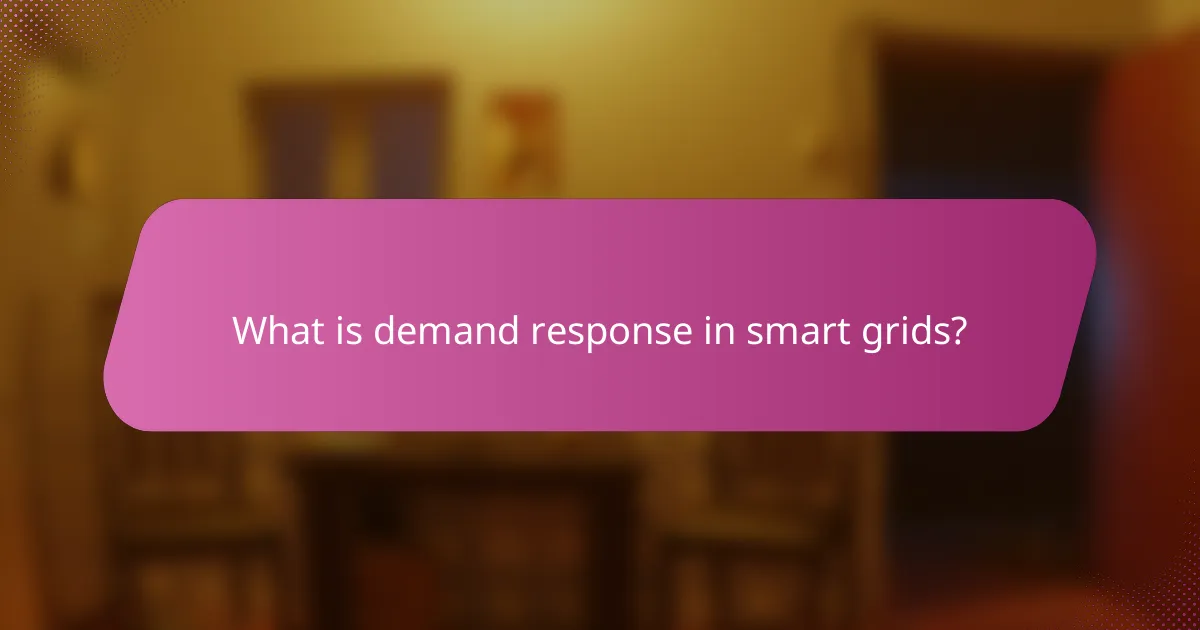
What is demand response in smart grids?
Demand response in smart grids refers to the strategies and technologies that encourage consumers to adjust their energy usage during peak demand periods. By shifting or reducing consumption, participants help maintain grid stability and efficiency, often in exchange for financial incentives.
Consumer participation incentives
Incentives for consumer participation in demand response programs can include financial rewards, reduced energy rates, or rebates. Utilities may offer these benefits to encourage users to reduce their energy consumption during peak times, which helps lower overall demand on the grid.
For example, a utility might provide a discount on monthly bills for customers who agree to limit their electricity use during specific hours. This not only benefits the grid but also allows consumers to save money.
Peak load reduction strategies
Peak load reduction strategies involve various methods to decrease energy consumption during high-demand periods. These can include time-based pricing, where electricity costs more during peak hours, prompting users to shift usage to off-peak times.
Another effective strategy is the implementation of smart appliances that can automatically adjust their operation based on grid signals. For instance, a smart thermostat might pre-cool a home during the night when demand is lower, reducing the load during peak afternoon hours.
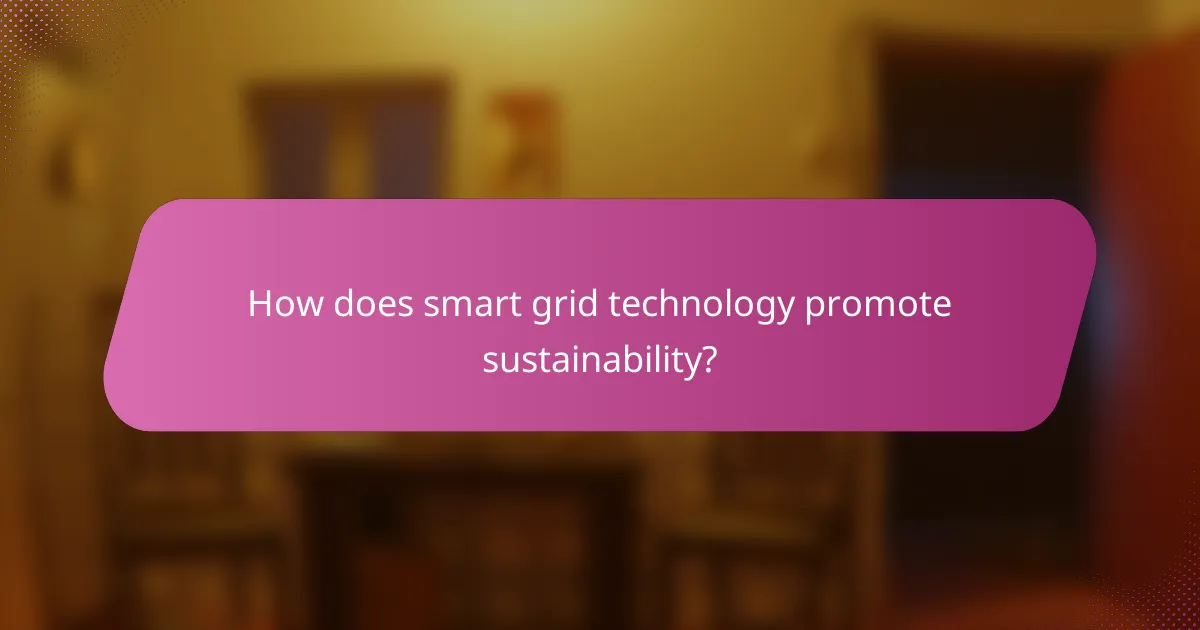
How does smart grid technology promote sustainability?
Smart grid technology enhances sustainability by optimizing energy distribution and integrating renewable energy sources. This leads to more efficient energy use and a significant reduction in environmental impact.
Integration of renewable energy sources
Smart grids facilitate the seamless integration of renewable energy sources such as solar and wind power into the existing energy infrastructure. By utilizing advanced sensors and communication technologies, these grids can manage the variability of renewable generation, ensuring a stable energy supply.
For instance, during peak sunlight hours, solar energy can be harnessed and distributed efficiently, reducing reliance on fossil fuels. This integration not only supports cleaner energy production but also encourages the development of local renewable projects.
Reduction of carbon emissions
By optimizing energy consumption and enabling the use of cleaner energy sources, smart grid technology significantly reduces carbon emissions. Efficient energy management helps lower the overall demand for electricity generated from fossil fuels, which is a major contributor to greenhouse gas emissions.
Moreover, smart grids can implement demand response strategies that adjust energy usage during peak times, further decreasing the need for carbon-intensive power plants. This proactive approach can lead to reductions in emissions by tens of percent, contributing to national and international climate goals.
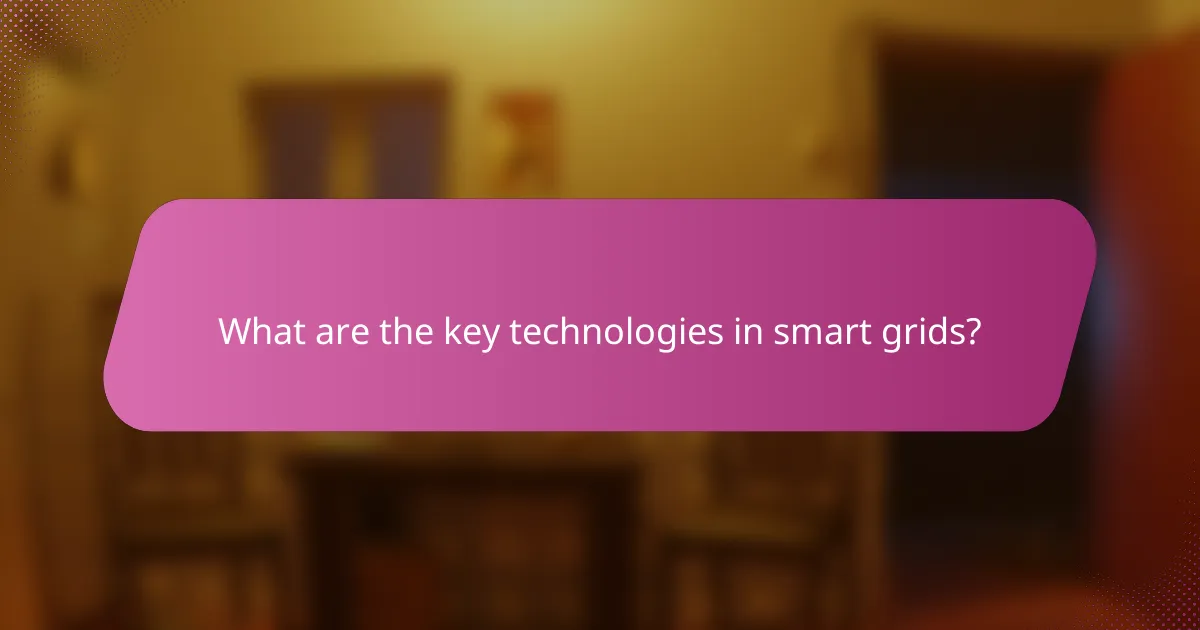
What are the key technologies in smart grids?
The key technologies in smart grids include smart meters, advanced communication networks, and distributed energy resources. These components work together to enhance energy efficiency, facilitate demand response, and promote sustainability in energy consumption.
Smart meters
Smart meters are digital devices that record energy consumption in real-time and communicate this data to both consumers and utility companies. They enable users to monitor their energy usage more effectively, leading to informed decisions about energy consumption and potential cost savings.
These meters often support time-of-use pricing, allowing consumers to shift their energy usage to off-peak hours when rates are lower. This can lead to significant savings, especially in regions with variable electricity pricing.
Advanced communication networks
Advanced communication networks are essential for the seamless exchange of data between smart meters, utility providers, and distributed energy resources. These networks utilize technologies such as fiber optics, wireless communication, and the Internet of Things (IoT) to ensure reliable and fast data transmission.
By enabling real-time communication, these networks help utilities manage demand response programs more effectively, allowing for better grid stability and efficiency. They also facilitate remote monitoring and control of energy resources, reducing the need for manual interventions.
Distributed energy resources
Distributed energy resources (DERs) refer to small-scale energy generation or storage technologies located close to the point of use, such as solar panels, wind turbines, and battery storage systems. These resources can significantly enhance grid resilience and sustainability by reducing reliance on centralized power plants.
Incorporating DERs into the energy mix allows for greater flexibility and can help balance supply and demand. Utilities can incentivize the adoption of these technologies through programs that support installation and integration, ultimately leading to a more sustainable energy ecosystem.

What are the benefits of smart grids for consumers?
Smart grids offer consumers enhanced energy management, leading to lower costs and improved service reliability. By integrating advanced technologies, these systems enable more efficient energy consumption and better responsiveness to demand fluctuations.
Lower energy costs
Smart grids help reduce energy costs by optimizing electricity usage and enabling time-based pricing. Consumers can take advantage of lower rates during off-peak hours, leading to potential savings of 10-30% on their electricity bills.
Additionally, smart meters provide real-time data on energy consumption, allowing users to identify high usage patterns and adjust their habits accordingly. This proactive approach can lead to further reductions in energy expenses.
Improved reliability
Smart grids enhance the reliability of electricity supply by quickly detecting and addressing outages. With automated monitoring and control systems, utilities can respond to issues in real-time, minimizing downtime to single-digit minutes in many cases.
Furthermore, the integration of renewable energy sources into smart grids contributes to a more stable energy supply. By balancing demand with available generation, consumers benefit from a consistent power flow, reducing the likelihood of blackouts.
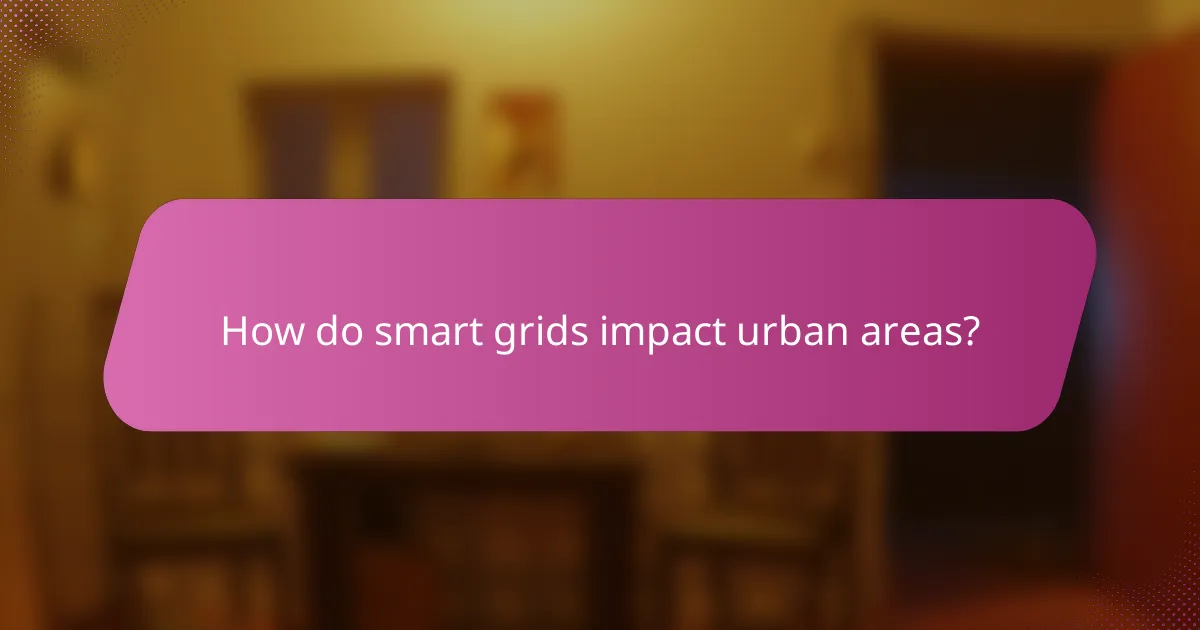
How do smart grids impact urban areas?
Smart grids significantly enhance the efficiency and reliability of energy distribution in urban areas. By integrating advanced technologies, they enable better management of electricity demand, improve energy resilience, and support sustainable practices.
Enhanced energy resilience
Smart grids bolster energy resilience by utilizing real-time data and automated systems to quickly respond to outages and fluctuations in demand. This capability minimizes downtime and ensures a stable power supply, which is crucial for urban infrastructure and services.
For example, during peak usage times or extreme weather events, smart grids can reroute power and balance loads effectively. Urban areas can expect to see reduced blackout durations and improved service reliability as a result.
Support for electric vehicle infrastructure
Smart grids play a vital role in supporting electric vehicle (EV) infrastructure by managing charging stations and optimizing energy distribution. They facilitate the integration of renewable energy sources, allowing EVs to be charged with cleaner energy, which enhances sustainability in urban settings.
Urban planners can leverage smart grid technology to strategically locate charging stations based on real-time usage patterns and energy availability. This approach not only improves accessibility for EV users but also helps in reducing overall emissions in densely populated areas.
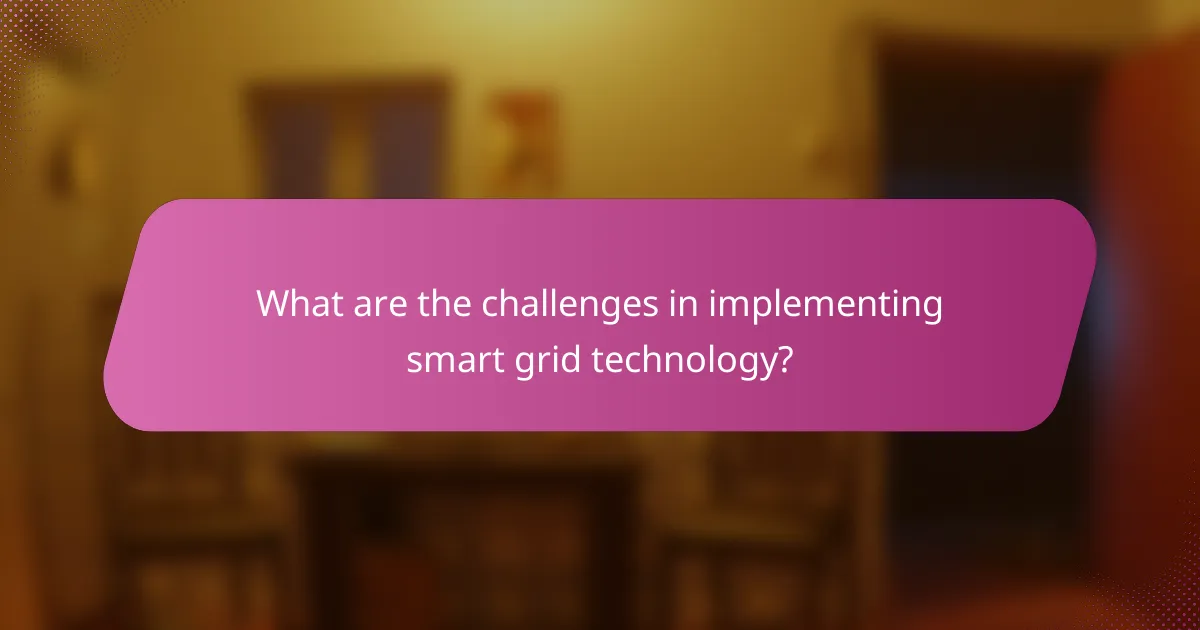
What are the challenges in implementing smart grid technology?
Implementing smart grid technology faces several challenges, including high initial investment, integration complexities, and regulatory hurdles. These obstacles can hinder the deployment and efficiency of smart grids, impacting their overall effectiveness in improving energy management.
High initial investment
The high initial investment required for smart grid technology can be a significant barrier for utilities and governments. Costs may include upgrading infrastructure, installing advanced metering systems, and implementing communication technologies. Depending on the scale of the project, these investments can range from millions to billions of dollars.
Utilities must weigh the long-term benefits against upfront costs. While smart grids can lead to operational savings and improved energy efficiency over time, the financial burden at the outset can deter stakeholders. For example, a utility might need to secure funding through bonds or government grants to cover these expenses.
To mitigate the impact of high initial investments, stakeholders should consider phased implementation. This approach allows for gradual upgrades and can help spread costs over time, making it more manageable. Additionally, exploring partnerships with technology providers can lead to shared investment and reduced financial risk.
